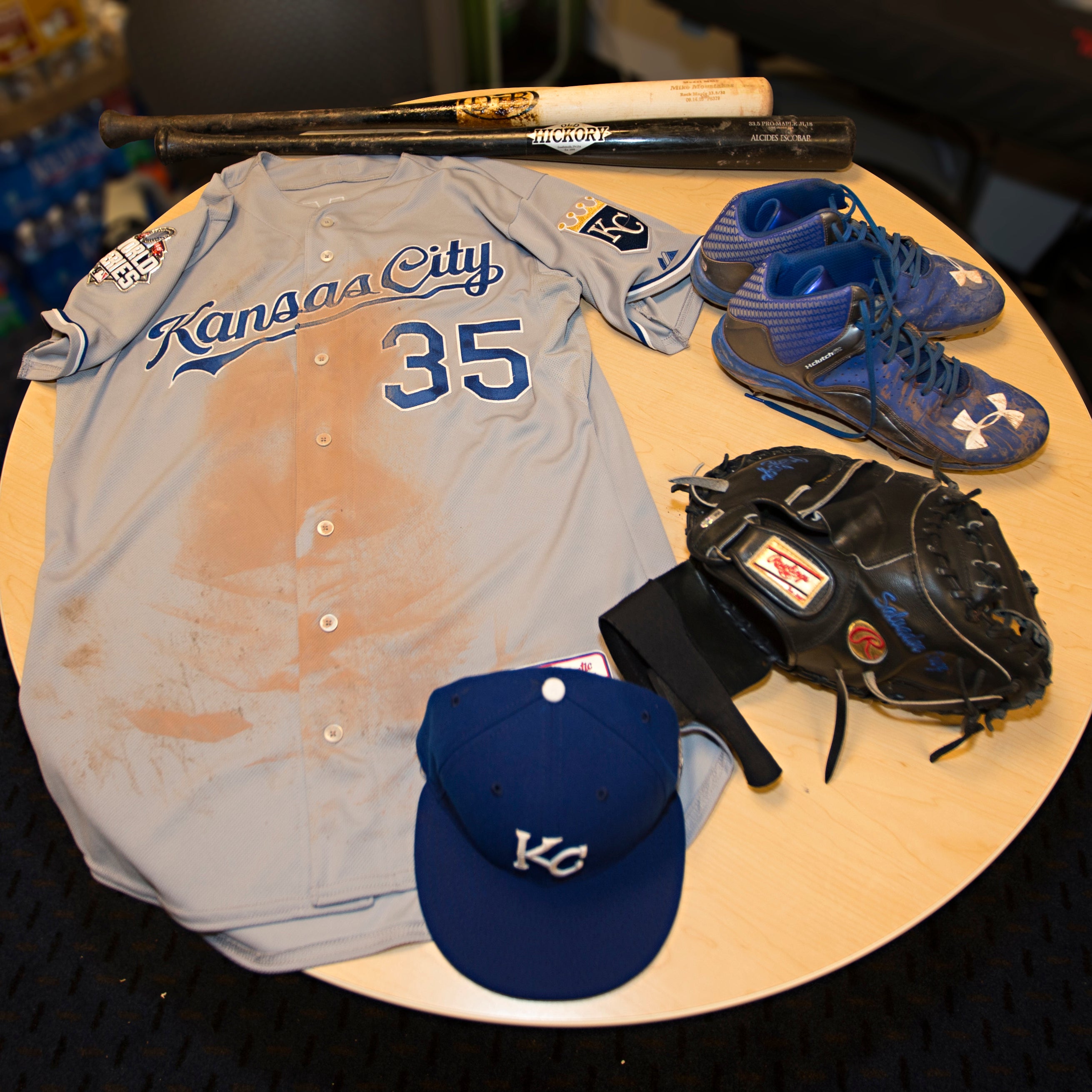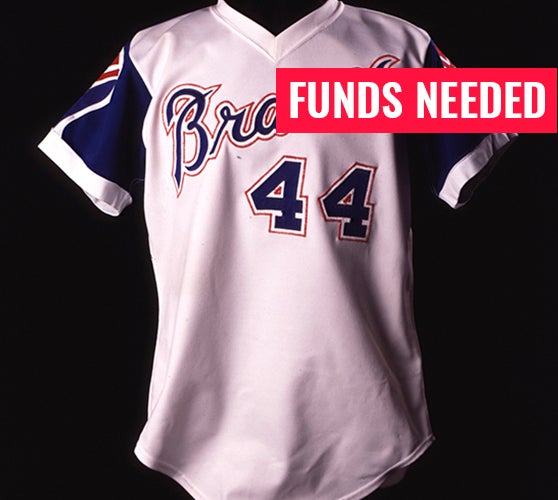A Debut to Remember for Raúl Mondesí
In 1,525 regular season and 10 Postseason games through 13 seasons as a major league ballplayer, Raul Mondesi never reached the World Series.
His son Raul A. Mondesi, however, got to the World Series without playing a single major league regular season or postseason game.
In fact, he got there without even playing a game of Triple-A ball. And he earned a World Series ring.
On Oct. 30, 2015, the younger Mondesi made his big league debut as a pinch hitter in the Kansas City Royals’ 9-3 loss to the Mets. It was the Royals’ only loss to New York in the five-game World Series. Though he struck out in his only at-bat, Mondesi made history as the first person to make his big league debut in the World Series. Since 1901, he is only the second individual to debut in the Postseason.
According to Major League Rule 40 (a)(1), those players eligible for postseason play must:
Have been on a Major League Active, Disabled, Bereavement / Family Medical Emergency, Paternity, Suspended or Military List of such Major League Club as of Midnight Eastern Time on August 31, or on such date be under control, but on optional assignment, or on assignment from another Major League organization and not yet reported; and
Have remained reserved to such Major League Club (at the Major or Minor League levels) through the beginning of the applicable post-season series, unless the player is replacing an injured player pursuant to (Major League) Rule 40(a)(3).
Seeing as how Mondesi was reserved to the Royals all season, despite playing the entire year for their Double-A Texas League affiliate, the Northwest Arkansas Naturals, he was eligible for the postseason. Kansas City removed Joba Chamberlain from its 40-man roster in order to make room for Mondesi.
The Royals also removed speedy outfielder Terrance Gore – who played in the 2014 World Series for Kansas City – from its active roster to fit the 20-year-old Mondesi in.
For Royals manager Ned Yost, it was all about the versatility Mondesi brought to the table.
“Mondesi can do a lot of things,” Yost told the Kansas City Star. He can play the field, really well. … He’s a switch-hitter. He can hit a fastball, he can bunt and he can run.”
Mondesi was told to be ready for any kind of situation.
“If I’ve got a chance, I’ve just got to do my work to give all I’ve got,” Mondesi told the Star before the first game of the World Series in Kansas City.
That chance came in the fifth inning of Game 3, with the Mets up 5-3 and the pitcher’s spot due to lead off the inning, Yost sent Mondesi in to face Noah Syndergaard. He took the first pitch for a ball but ultimately struck out swinging on a fastball from the hurler called “Thor.”
After the game, Mondesi revealed to reporters the advice his father, who was watching in his native Dominican Republic, gave him.
“He said something like, ‘Be prepared. You’re going to have a chance to be in the World Series. I’ve never been in the World Series,’” the younger Mondesi mentioned. “He was laughing like that. It was incredible.”
Mondesi would head back to the minors in 2016, splitting time between three of the Royals’ affiliates before re-joining the big club on July 26.
However, the privilege of playing in regular season MLB games following a postseason debut was not afforded to Mark Kiger.
Kiger was a fifth round pick of the Oakland Athletics in the 2002 MLB Draft. He had just put together some solid offensive seasons as an infielder at the University of Florida. In fact, Kiger was on Oakland General Manager Billy Beane’s “perfect world” list of 20 players who he would draft in 2002 if money were no object and the A’s faced no competition in the draft, according to Moneyball.
Kiger, who was not on the A’s 40-man roster, split the 2006 regular season between the Athletics’ top affiliates in Sacramento (Triple-A) and Midland (Double-A), but late in the regular season and into the Postseason, Oakland’s middle infielder options were dwindling.
Shortstop Bobby Crosby went on the disabled list in August and backup infielder Antonio Perez broke a finger leading to the Postseason. When regular second baseman Mark Ellis broke a finger against the Twins in the Division Series, there was an emergency. Backup infielders Marco Scutaro and D’Angelo Jimenez were forced into starting roles.
Oakland’s front office considered Kiger and Keith Ginter as replacements for Ellis on the postseason roster, but Ginter elected free agency just before the Postseason started and would have needed to be signed to a 2007 contract. Although Ginter would have provided more offensive strength, defense was needed. Therefore, Kiger got the call.
“It was pretty unanimous throughout the organization,” A’s assistant general manager David Forst told MLB.com.
“He’s the best defensive option we have. He’s the right guy.”
On Friday the 13th of October in Detroit, Kiger made his debut as a defensive replacement at second base, with Oakland down 3-0 in the eighth inning of Game 3. He made a putout on a play at second to end the inning.
“First time in the big leagues, it’s pretty nerve-wracking,” Kiger told MLB.com’s Ian Browne after making his entrance into the big leagues. “It felt good. My dad was here. I get more nervous playing in front of my dad than anyone else. Him being here took my mind off of the crowd.”
Browne asked Kiger after Game 3 if making his debut in the Postseason would ease the transition in his regular season debut.
“I don’t know, I think the whole atmosphere is mental,” replied Kiger. “You just play the game and if you get caught up [in] it, it’s probably going to be a negative outcome.”
Kiger reappeared the following night in Game 4, entering at second base in the bottom of the ninth. Though he would not record any defensive statistics, he was on the field for the Tigers’ Magglio Ordonez’s ALCS-clinching three-run home run.
Just like that, it was over. Mark Kiger’s big league career ended. Unlike Mondesi in 2016, there would be no regular season debut for Kiger in 2007.
Released by the A’s in December 2006, Kiger would spend two of the next three seasons in the Mets’ minor league system before calling it a career after the 2009 campaign.
Photographer Tabitha Soren caught up with Kiger in 2013 for an ESPN.com piece published in 2015 which looked at some of the players chosen in the Athletics’ 2002 draft class.
He claimed that “learning the science behind the game” made him “a worse player.” Living in Texas at the time and inspired by the film Field of Dreams, Kiger said, “I’ll probably end up writing a book about being the modern-day Moonlight Graham.”
Kiger remains in Texas and coaches various youth travel baseball teams.
Hall of Fame Membership
There is no simpler, and more essential, way to demonstrate your support than to sign on as a Museum Member.
Matt Rothenberg was the manager of the Giamatti Research Center at the National Baseball Hall of Fame and Museum







